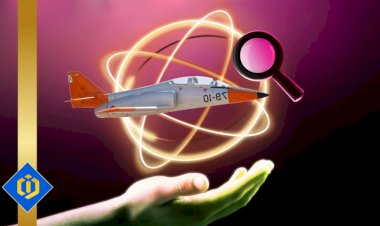A Look at the Protocols in the Blockchain Technology
The blockchain protocol is a common term for the methods and rules that are agreed upon. These methods are actually different systems that are used to come to an agreement and validate transactions in the Blockchain network. Some of these protocols make users buy physical mining devices, and some do not require you to have a physical device.

Blockchain was introduced in 2008 and ever since it has come a long way. Although a large part of Blockchain technology is related to the crypto market. Blockchain is a decentralized database that is made up of a number of nodes. Nodes are actually those computers that are in the network and form this database together. Blocks are connected to one another via protocols. The protocol is, in fact, a program that is the fundamental structure of the network.
Different protocols are designed based on the need for them in the technology in which they are used. For example, Bitcoin was first designed to create a decentralized monetary transfer system which is disintermediated. Ethereum is more focused on developing a Blockchain platform through which decentralized applications can develop further through smart contracts.
What Is Blockchain Protocol?
The blockchain protocol is a common term for the methods and rules that are agreed upon. These methods are actually different systems that are used to come to an agreement and validate transactions in the Blockchain network. Some of these protocols make users buy physical mining devices, and some do not require you to have a physical device.
Some Blockchain Protocols
Proof of Work
Many of cryptocurrencies such as Bitcoin use PoW as their consensus algorithm. As a result, miners have a role in the general scheme of PoW. Having a share in this process by the computation power of their systems and by making mining rigs that are mostly made up of a number of graphic cards, they participate in this process. The reward of the miner will be paid to them. Getting a physical mining device means that the miner has to pay for it which is usually something around a couple of thousand dollars.
Proof of Stake
With PoS you do not need to buy expensive mining rigs. By having coin and keeping your computer on you will take part in this process. This does not require a lot of energy on the part of your system and you are rewarded as a miner. The more coins you have, the more share you have and as a result of the more reward you get. PoS does not need initial assets to create a mining rig. Anyone who has more assets can make more money by merely buying coins.
Proof of Weight
Some projects like the project that has been launched to store files use this protocol more than others. In the previously mentioned method, the person makes money merely based on the number of coins, but in this method in addition to the number of coins, the number of files are calculated. In fact, this method encourages the user to have an active and meaningful presence in the network, in addition to having coins.
Well-known Blockchain Protocols
There are many Blockchain protocols but among the most well-known of them are Bitcoin, Ethereum, Ripple, and Hyperledger. In the following, we will explain two of the most well-known Blockchain protocols, Bitcoin and Ethereum.
Bitcoin
Bitcoin is one of the first Blockchain protocols. The main features of this protocol are as follows:
- This protocol is a public Blockchain. It means that anyone can become a member of it and does not need permission for access.
- This protocol allows users to make their financial transfers without the need for a third party or intermedium.
- Each node has the full information of Blockchain and therefore forms a decentralized network.
- Transactions have a unique ID, Bitcoin address, the number of Bitcoin transferred and the Bitcoin destination address.
- Miners create these transactions. This means that a number of devices are used to mine Bitcoins. Users are rewarded in exchange for mining. Miners attach this transaction to the next block. Every ten minutes a new Block is processed, and then the transactions that are added to that Block will be registered on the Blockchain. The registration of each transaction not only needs the information of the current transaction but it also needs the reference of the previous block. The information of the previous is not identifiable, and the miner has to get to that through solving a cryptographic puzzle. Furthermore, in order to solve this riddle, you need a system with high power and speed.
Ethereum
Ethereum Blockchain is very similar to Bitcoin Blockchain. For example:
- It is a public protocol that does not need access permission.
- It has used similar technology in the main column of the protocol. For example, it has used a hash cryptography function, private and public keys, and a P2P network.
- But unlike Bitcoin that is used for cryptocurrency transactions, Ethereum is designed for a wider range of uses. Ethereum creates a Blockchain platform with which users can develop their Blockchain projects such as their own cryptocurrencies. This platform is called Ethereum Virtual Machine. Smart contracts have made this possible. Smart contracts are in fact pieces of code that allow you to run a function. These platforms are in the Ethereum platform and are inspired by Ethereum’s exclusive language C++, Java, Python, and JavaScript. Decentralized applications are those in which backend code is run on a decentralized Blockchain and includes smart contracts. The frontend of this code can be written in any language. A decentralized application needs to have the following properties:
- It should be fully open-source
- It should be run anonymously
- It needs to use an encrypted token
- Data need to be saved on a decentralized Blockchain and meet cryptography standards
Therefore, Ethereum uses a wider definition of Blockchain since an Ethereum Virtual Machine includes smart contracts and decentralized applications. Ethereum also allows users to allocate how much of their computer power they want to be used for the transaction processing and the measuring unit for this has been called Gas. Simple transactions require less Gas, while large transactions require more Gas.
Which protocol is better?
All of these protocols are made to perform decentralization in the best way. The crypto market favors PoS more because having coins and temporary participation in this network is much simpler and with fewer troubles. Even Ethereum moved from PoW to PoS protocol.




















